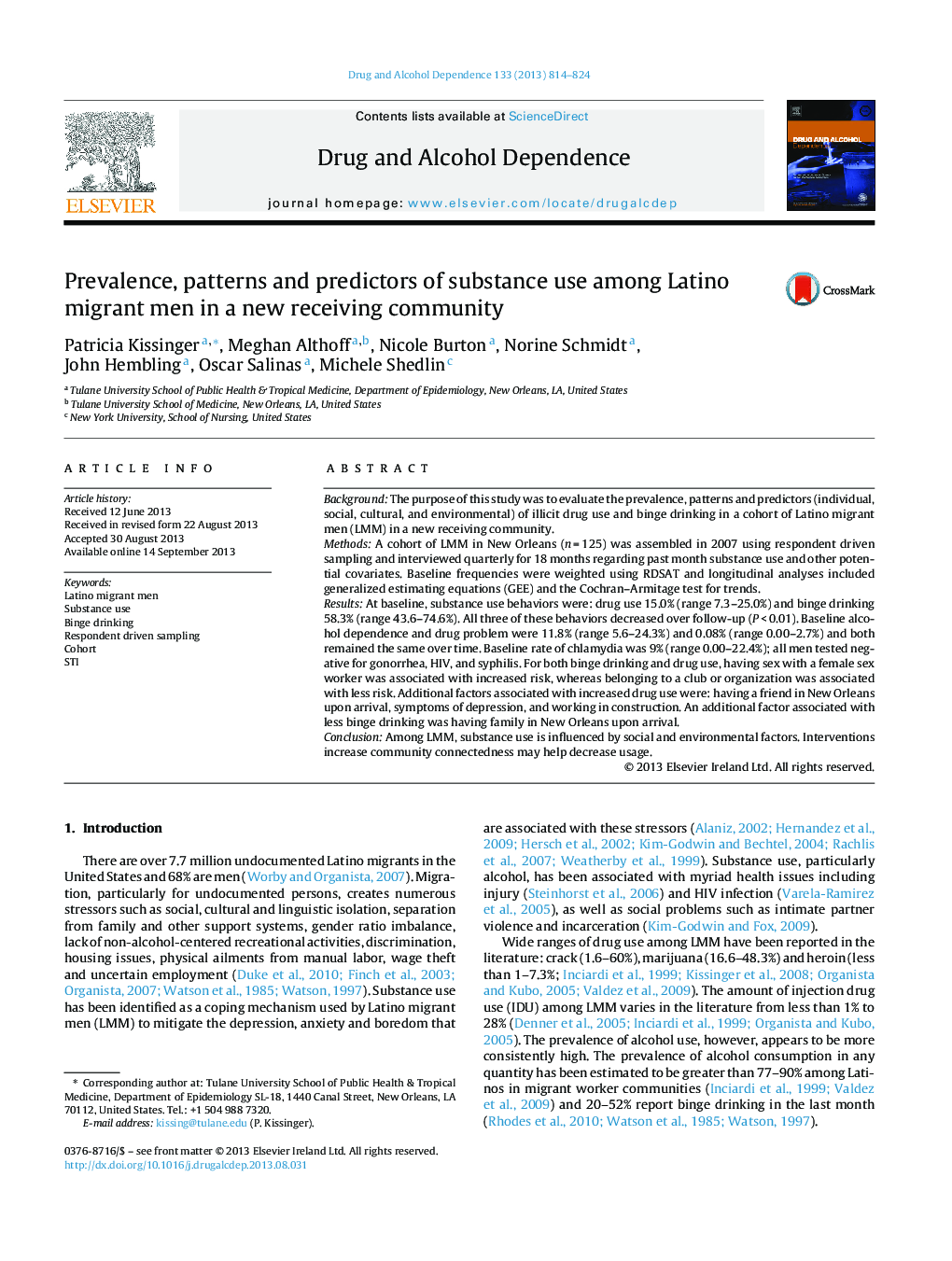| Article ID | Journal | Published Year | Pages | File Type |
|---|---|---|---|---|
| 1069926 | Drug and Alcohol Dependence | 2013 | 11 Pages |
BackgroundThe purpose of this study was to evaluate the prevalence, patterns and predictors (individual, social, cultural, and environmental) of illicit drug use and binge drinking in a cohort of Latino migrant men (LMM) in a new receiving community.MethodsA cohort of LMM in New Orleans (n = 125) was assembled in 2007 using respondent driven sampling and interviewed quarterly for 18 months regarding past month substance use and other potential covariates. Baseline frequencies were weighted using RDSAT and longitudinal analyses included generalized estimating equations (GEE) and the Cochran–Armitage test for trends.ResultsAt baseline, substance use behaviors were: drug use 15.0% (range 7.3–25.0%) and binge drinking 58.3% (range 43.6–74.6%). All three of these behaviors decreased over follow-up (P < 0.01). Baseline alcohol dependence and drug problem were 11.8% (range 5.6–24.3%) and 0.08% (range 0.00–2.7%) and both remained the same over time. Baseline rate of chlamydia was 9% (range 0.00–22.4%); all men tested negative for gonorrhea, HIV, and syphilis. For both binge drinking and drug use, having sex with a female sex worker was associated with increased risk, whereas belonging to a club or organization was associated with less risk. Additional factors associated with increased drug use were: having a friend in New Orleans upon arrival, symptoms of depression, and working in construction. An additional factor associated with less binge drinking was having family in New Orleans upon arrival.ConclusionAmong LMM, substance use is influenced by social and environmental factors. Interventions increase community connectedness may help decrease usage.
